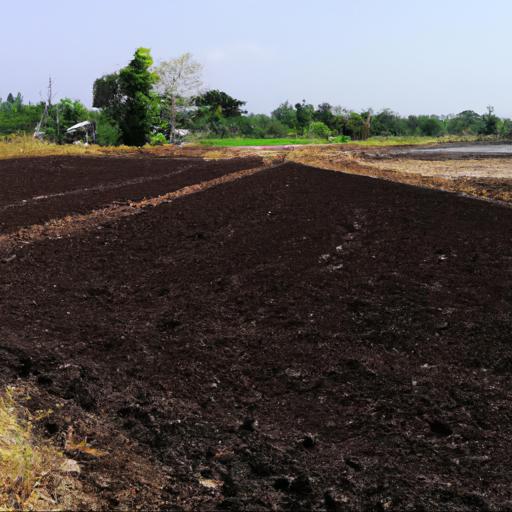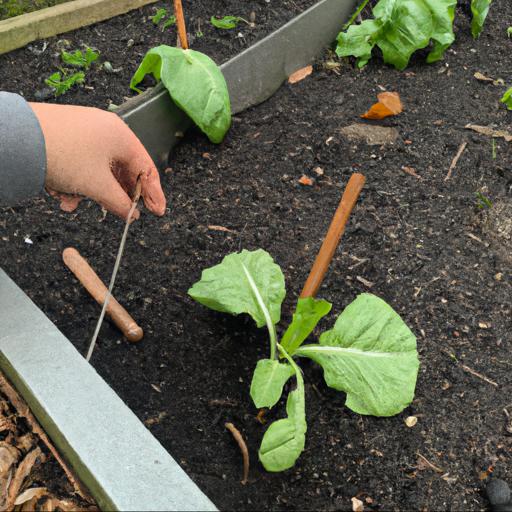Are you looking to start a new vegetable patch in your backyard? Growing your own vegetables can be a rewarding experience, providing you with fresh, healthy produce that you can enjoy all season long.
It also allows you to save money on groceries and have control over the quality of the food you eat. Starting a vegetable patch can seem daunting, but with a little bit of planning and preparation, you can have a thriving garden of your own in no time. In this blog, we’ll provide you with tips and advice to help you get started on your vegetable patch journey.
Preparing the soil for planting

To effectively start a new vegetable patch, careful preparation of the soil is essential. With the right soil quality, any gardener can create a vibrant and bountiful vegetable patch.
As a UK garden expert, I recommend the following steps to prepare the soil for planting. The first step is to assess the soil quality. There are many ways to find out what kind of soil you are working with; from testing the risk of acidity by using a pH tester or testing structure with a soil penetrometer, to using a compost tester for compost content.
This can help to formulate a plan for the best choice of amendments to improve the soil structure. The next step is to break up the soil.
This can be done with a garden fork and spade or a rotavator. The soil should be dug to a depth of around 30cm and forked over to loosen compacted clumps. It is important to get rid of any stones and break down larger lumps to create more fine soil.
Finally, it is important to add in soil amendments such as compost, manure, or peat moss – all of which can improve the nutrients in the soil and create a well-aerated structure that is conducive to plant growth. It is also helpful to check the soil’s pH level with a testing kit and adjust it as necessary depending on the kinds of plants that are going to be planted.
Following these steps will help to ensure your new vegetable patch is successful. It is important to take the time to assess the soil quality and to think through the steps of preparing the soil before you begin planting. Taking these steps will help ensure your vegetable patch thrives with healthy and bountiful produce.
Choosing the right vegetables for your garden

Starting a vegetable patch from scratch can seem like a daunting task. To ensure your success, it’s important to choose the right vegetables to sow. By selecting vegetables that are well-suited to your local climate and soil type, and those that you’re most likely to use, you can maximize your chances of a successful vegetable harvest.
Climate is a major factor in vegetable growing success. The temperature, humidity, amount of sunlight and rainfall will determine which plants will thrive in your region.
It’s best to consult a local garden expert or gardening book to identify your local microclimate and recommend specific varieties of vegetables to grow in your area. Some vegetables such as lettuce and spinach that prefer cooler temperatures may need to be grown in a sheltered location, while others like tomatoes and peppers thrive in warmer temperatures. The soil type in your garden should also be considered, as some vegetables prefer different types of soil.
Heavier clay soils require extra drainage to prevent waterlogging, while sandier soils may need more organic matter to improve moisture retention. Depending on the amount of soil amendments you can add, it’s best to select vegetables that will grow well in the native soil type of your garden.
Finally, it’s important to select vegetables that you are likely to use. When starting a vegetable patch, allotment or pot keen, it’s easy to be seduced by ornamental varieties, but it makes more sense to choose vegetables you enjoy eating.
Consider deciding what kind of meals you want to cook and select vegetables that either feature or would enhance the meal. Thinking ahead and including vegetables that could be harvested over a longer period, or repeated in succession, will help to ensure you have a steady supply of vegetables throughout the growing season.
Planting and caring for your vegetable patch

The task of planting and caring for a vegetable patch can seem daunting at first, but it is actually a rewarding experience. Starting a new vegetable patch requires proper preparation, knowledge, and some hard work. The first step to starting a new vegetable patch is choosing a location.
It’s important to make sure the location has adequate sun exposure to ensure optimal growth for vegetables. Make sure the site for your vegetable patch is well-draining.
If necessary, add a mixture of sand and soil to create an ideal growing environment. Once the location has been chosen, it’s time to prepare the soil for planting. It’s important to add compost to the soil to promote healthy plant growth, as well as remove any weeds or debris.
Additionally, spread a layer of mulch around your vegetable patch to keep the soil moist and reduce weed growth. When it’s time to start planting, it’s important to carefully read the instructions on each vegetable’s seed packaging.
Make sure to space the plants appropriately for optimal growth, and to give them enough space to obtain adequate sun and air flow. Additionally, be sure to water your plants consistently and properly. Caring for a vegetable patch also involves monitoring it for disease and pests.
Inspect your vegetable patch regularly to keep an eye out for diseases and pests, and treat the plants if necessary. Additionally, regular pruning of your plants will promote healthy growth and neatness in the garden, and reduce the risk of disease.
By following the steps outlined above, you can ensure success and satisfaction when growing your own vegetable patch. While growing a vegetable garden is rewarding, it does require commitment, and you must be willing to dedicate your time to tending your vegetables. But with proper care and preparation, you can get the most out of your new vegetable patch.
Harvesting and enjoying the fruits of your labor
Starting a new vegetable patch is a great way to begin harvesting and enjoying the fruits of your labor. Whether you have a small garden plot available or a large open space to accommodate your vegetables, there are several steps you should take to ensure you have a successful harvest. Firstly, it is important to choose the right spot for your vegetable patch.
Ideally, you should choose a location with plenty of sunlight, as most vegetables require at least six hours of sun each day to prosper. It is also important to choose a spot with good drainage and adequate nutrients.
If you are unable to select a spot with these recommended conditions, you can consider amending the soil before you plant. The next step is to decide what you want to grow in your vegetable patch. When selecting your crops, make sure you take into account your planting season, the space available, and of course, your personal taste.
For instance, if you choose to grow tomatoes, peppers, and squash, be aware of their growing times, as you’ll need to rotate your plantings. Additionally, you’ll want to select varieties of each vegetable that will thrive in your climate.
Finally, once you’ve chosen your vegetable patch location, soil, and plants, it’s time to actually begin planting. When planting, it is important to dig deep enough so that the roots of the plants can spread out and support the full growth of the vegetable.
Additionally, be sure to water your vegetables early in the morning and late in the evening, when the sun is not so intense. With the proper preparation, your vegetable patch should be ready for harvesting in about 8 to 10 weeks. So, when you’re ready, start your vegetable patch and enjoy the benefits of harvesting and enjoying the fruits of your labor.
With a bit of planning, effort and care, you can have a bountiful harvest that makes your mouth water and provides you with the freshest produce.
Conclusion
Having a vegetable patch is a great way to get fresh, organic produce right from your own backyard. It’s easy to get started and with a little planning and care, you can have a thriving vegetable garden in no time.
From choosing the right location, to preparing the soil, to selecting the right vegetables for your climate, this guide will provide you with the information you need to create a successful vegetable patch.
FAQ
What type of soil is best for starting a vegetable patch?
The best type of soil for starting a vegetable patch is nutrient-rich, well-drained, and slightly acidic soil.
What vegetables are best suited for a beginner vegetable patch?
The best vegetables for a beginner vegetable patch are easy-to-grow varieties such as tomatoes, peppers, lettuce, carrots, beans, and radishes.
How much space is needed for a vegetable patch?
It depends on the size and type of vegetables being grown. Generally, a vegetable patch should be at least 4 feet by 8 feet to provide enough space for a variety of vegetables.
What tools are needed to start a vegetable patch?
Tools needed to start a vegetable patch include a spade, rake, hoe, trowel, and watering can.
How often should a vegetable patch be watered?
Vegetable patches should be watered at least once or twice a week, depending on the weather and the soil type.
What is the best way to protect a vegetable patch from pests?
The best way to protect a vegetable patch from pests is to practice good garden hygiene, such as removing weeds, debris, and old plants, and to use physical barriers such as fences or netting. Additionally, using natural pest control methods such as companion planting, introducing beneficial insects, and using organic sprays can help to keep pests away.

